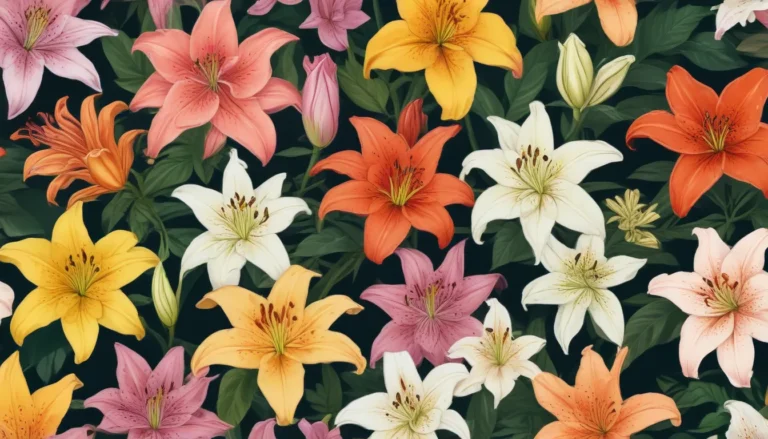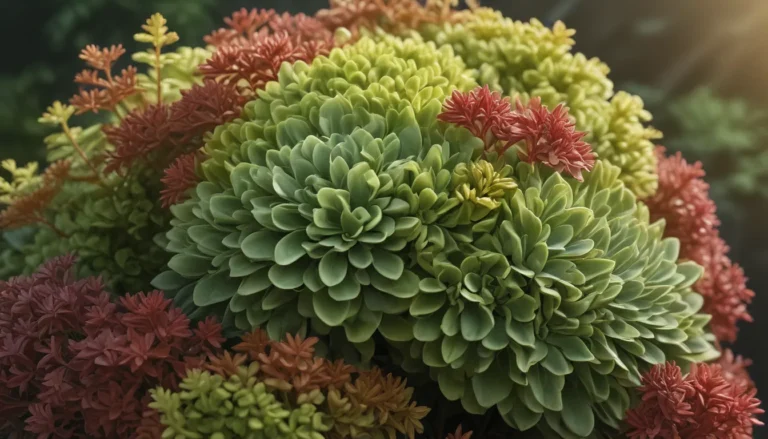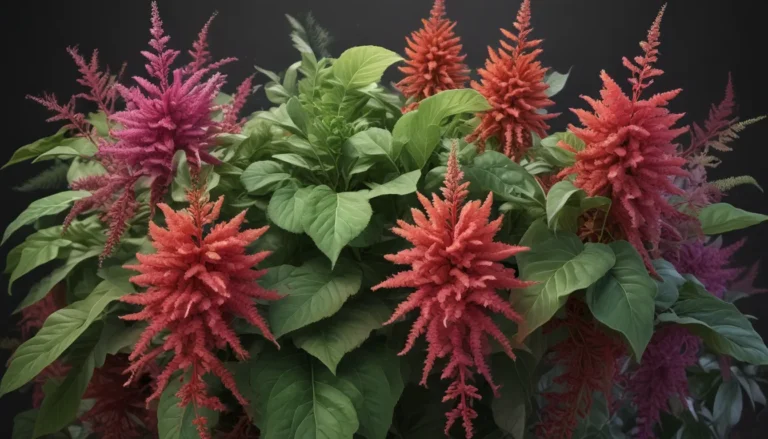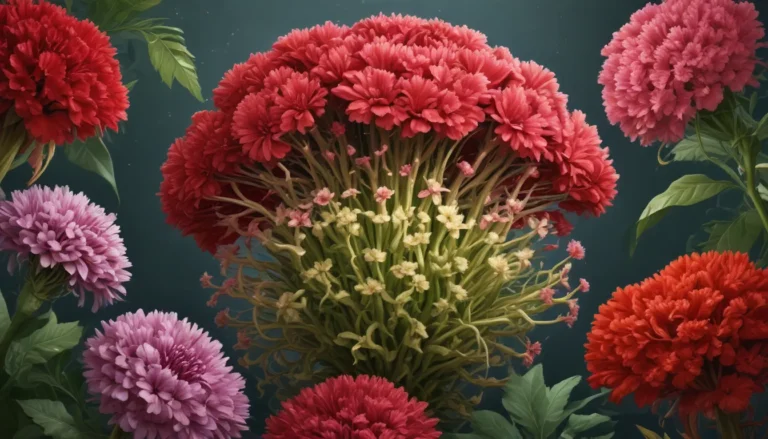The pictures we use in our articles might not show exactly what the words say. We choose these pictures to make you interested in reading more. The pictures work together with the words but don’t take their place. The words still tell you the important facts.
Are you ready to immerse yourself in the captivating realm of hollyhock, the enchanting flowering plant that has enraptured gardeners and nature enthusiasts for generations? Let's embark on a journey filled with surprising facts and intriguing insights that will deepen your appreciation for this remarkable botanical gem.
Hollyhock, scientifically known as Alcea rosea, is a tall and versatile plant that exudes elegance and whimsy with its towering spires of vibrant blossoms. Despite its popularity for its beauty, there is much more to hollyhock than meets the eye. Join us as we unravel 10 surprising facts about hollyhock that will unveil the hidden wonders of this extraordinary plant.
Unveiling the Enchantment of Hollyhock
Hollyhock: A Mysterious Misnomer
Contrary to its name, hollyhock is not a true holly but rather a member of the mallow family known as Malvaceae. Originating from Asia and Europe, this captivating flowering plant has been cultivated for centuries for its attractive flowers that add a touch of grace to any garden.
Towering Elegance: Hollyhock’s Impressive Stature
One of the most striking features of hollyhock is its towering height, reaching up to a remarkable 9 feet tall. The majestic spikes of bell-shaped flowers in a kaleidoscope of colors make hollyhock a standout presence in any garden or landscape, captivating the hearts of all who behold its splendor.
Versatility in Bloom: Hollyhock’s Adaptive Nature
Hollyhock's versatility shines through as it thrives in various environments, adapting to different conditions with ease. While a hardy perennial in warmer climates, hollyhock is often grown as a biennial or short-lived perennial in colder regions. This adaptability makes it a perfect choice for gardeners seeking to infuse their outdoor spaces with vibrant hues.
A Symphony of Pollinators: Hollyhock’s Floral Attraction
The large and showy flowers of hollyhock act as a beacon for butterflies and hummingbirds, drawing them in with their nectar-rich blooms. By planting hollyhocks, you not only enhance the beauty of your garden but also support local pollinator populations, adding a touch of life and vibrancy to your outdoor sanctuary.
Healing Elixir: Hollyhock’s Medicinal Legacy
With a history steeped in traditional medicine, hollyhock's roots and flowers have been prized for their therapeutic properties. From soothing sore throats to aiding in respiratory ailments and promoting digestion, hollyhock's mucilage-rich composition offers a natural remedy for various health issues.
Fertility and Abundance: Hollyhock’s Symbolic Significance
In ancient times, hollyhock was revered as a symbol of fertility and abundance, believed to bring blessings of prosperity and good fortune to households where it thrived. Today, these charming flowers continue to spread joy and beauty, carrying with them echoes of prosperity and growth.
A Kaleidoscope of Colors: Hollyhock’s Vibrant Palette
While shades of pink, purple, and white are the most common hues of hollyhock, these exquisite flowers boast a wide array of colors. From deep reds to vibrant yellows and even striking blacks, there is a hollyhock shade to suit every taste and design aesthetic, adding a burst of color to any garden.
Culinary Delights: Hollyhock’s Edible Leaves
Not only a treat for the eyes, but hollyhock also offers culinary delights with its edible leaves. With a mild flavor, these leaves can be incorporated into salads, soups, or cooked as a nutritious green vegetable. Harvesting only young leaves is recommended for optimal flavor and texture.
Ambition in Bloom: Hollyhock’s Symbolic Meanings
In the language of flowers, hollyhock symbolizes ambition and fruitfulness, embodying the desire to achieve goals and reap the rewards of hard work. Victorian era floral arrangements often featured hollyhock to convey these symbolic messages of growth and achievement.
Cultivating Wonder: Hollyhock’s Propagation Techniques
For those eager to cultivate their own hollyhocks, propagation can be done through seeds or cuttings. Whether sowing seeds directly in the garden or starting them indoors for later transplantation, hollyhock offers a rewarding gardening experience for enthusiasts seeking to nurture these majestic plants.
Embracing the Splendor of Hollyhock
In conclusion, hollyhock stands as a captivating plant with a rich tapestry of history and surprises waiting to be uncovered. From its towering stature to its vibrant blooms and symbolic meanings, hollyhock enchants gardeners and nature lovers alike with its unique charm and allure. Whether you seek to attract pollinators, add a splash of color to your garden, or delve into the enchanting stories surrounding this remarkable plant, hollyhock beckons you to explore its wonders and embrace its beauty.
Frequently Asked Questions
Q: How tall can Hollyhock grow?
A: Hollyhock can reach an impressive height of 6-8 feet, making it a majestic presence in any garden.
Q: Do Hollyhocks require a lot of sun?
A: Yes, Hollyhocks thrive in full sun and require at least 6-8 hours of direct sunlight daily to grow and bloom successfully.
Q: Are Hollyhocks drought-tolerant?
A: While resilient to some drought conditions, Hollyhocks prefer regular watering and well-drained soil for optimal growth and health.
Q: Can I grow Hollyhocks in containers?
A: Yes, Hollyhocks can be grown in containers, provided they are placed in large pots with good drainage and support for their tall stalks.
Q: How do I propagate Hollyhocks?
A: Hollyhocks can be propagated through seeds, which can be sown directly in the garden or started indoors for later transplantation.
Q: Are Hollyhocks prone to diseases?
A: Hollyhocks can be susceptible to rust disease, characterized by orange-brown spots on leaves. Adequate air circulation and proper watering can help prevent this issue.
Q: Can Hollyhocks attract pollinators?
A: Absolutely! Hollyhocks are nectar-rich flowers that attract bees, butterflies, and hummingbirds, enhancing biodiversity in your garden.
Q: When do Hollyhocks usually bloom?
A: Hollyhocks typically bloom in late spring to early summer, with some cultivars offering a second blooming period later in the season.
Q: What colors do Hollyhock flowers come in?
A: Hollyhock flowers showcase a vibrant spectrum of colors, including pink, red, white, yellow, and bi-colored varieties, adding a visual feast to any garden.
Q: Are all Hollyhock flowers single-petaled?
A: No, Hollyhock flowers can come in single, semi-double, or double forms, offering a diverse array of petal arrangements and visual appeal.
Q: Do all Hollyhock varieties have the same flower color?
A: No, Hollyhock varieties boast a wide range of flower colors, each with its unique charm and characteristics, allowing you to curate a garden palette that suits your taste.
Your Guide to Enchantment
As you embark on your journey through the enchanting world of hollyhock, let these surprising facts and insights be your guiding light, illuminating the hidden wonders and delights that await you. Embrace the beauty and intrigue of hollyhock in your garden, or let its captivating history and symbolism enrich your botanical knowledge. With hollyhock as your companion, the world of plants becomes a mesmerizing tapestry of enchantment and discovery, inviting you to explore, learn, and revel in the splendor of nature's remarkable creations.






